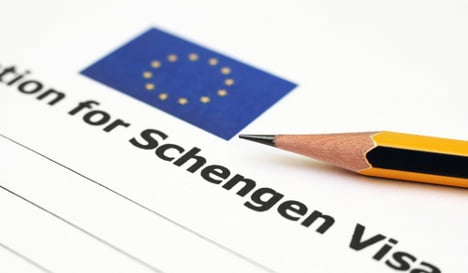German Chancellor Angela Merkel issued an unusually sober warning this week that the passport-free Schengen zone – hailed as a success story – was under threat if the European Union did not agree a common asylum policy.
With Hungary sealing off its main train station to stop asylum-seekers moving across the EU and Italy saying it was ready to reimpose border controls, observers fear the genie is out of the bottle and there will now be a rush to restore internal frontiers.
“If Europe does not take steps as a whole, the current situation is worrying for free movement at the heart of the EU,” Matthieu Tardis, a migration expert based in Paris, told AFP.
Since its creation in 1995, the Schengen area – named after a border town in Luxembourg – has abolished passport controls for travel between 22 of the EU's 28 countries, plus non-EU Norway, Switzerland, Iceland and Liechtenstein.
Supporters say Schengen has swept away psychological as well as physical barriers among Europeans, and that it has been a boon for Europe's single market, slashing costs by doing away with armies of border bureaucrats.
But the system is now creaking under the pressure of the biggest refugee crisis since World War II, as people from Syria, Afghanistan and Africa flood into Europe seeking refuge from war and repression.
Huge Strain
The lack of a EU-wide asylum policy is a key problem, with different countries dealing with asylum claims in different ways. This leads to disputes over the fairness of the distribution across the bloc and to refugees trying to head to those with most favourable terms.
Europeans “must agree on a common asylum policy,” French Interior Minister Bernard Cazeneuve said on Wednesday.
EU rules say the country where a refugee first arrives must process their asylum claim.
But after Germany said last week it would waive those rules for Syrians, as part of an estimated 800,000 asylum requests it expects to deal with this year, there has been a flood of people trying to travel through the EU to get there, and confusion about how migration rules and Schengen overlap.
“When we have common external borders (notwithstanding Schengen), we cannot leave front-line member states alone,” European Commission chief Jean-Claude Juncker said in a column in the Irish Times.
There is now a huge strain on Hungary, where police blocked hundreds of migrants from boarding trains to Austria and Germany from Budapest's main rail station on Tuesday and Wednesday.
Italy said on Wednesday it was ready to impose identification checks at Brennero on the border with Austria after receiving a request from Germany for help in easing the flow of migrants.
And there has been additional pressure on Schengen on the security front, following an attack on a French high-speed train from Amsterdam to Paris last month.
Merkel, Europe's most powerful leader, said EU states had to settle differences on redistributing migrants from overstretched Italy, Greece and Hungary.
“If we don't arrive at a fair distribution then the issue of Schengen will arise – we do not want that,” said Merkel.
'Economic benefits'
The issue is hugely sensitive, however, particularly because of the crossover with hot-button political issues in the increasingly anti-immigration climate of many European countries.
The European Commission defended Hungary's right to take steps such as blocking the railway station, as well as refusing to explicitly condemn its new razor-wire border fence with Serbia.
But with Brussels expected to unveil new long-term plans to deal with the migrant crisis in coming days, there are signs the EU may take a flexible approach.
Commission spokeswoman Natasha Bertaud pointed out that Schengen states were exceptionally allowed to introduce border checks after a security threat – raising the question of whether EU states could claim the huge number of migrants represented just that.
She also acknowledged that “you can never rule out the possibility of future changes being necessary”.
Quitting Schengen on the grounds of terrorism or migrants is a “convenient political excuse… but it's not a solution,” Marc Pierini of the Carnegie Europe think-tank told AFP.
“Schengen has brought considerable economic benefits to Europe. We must not forget that.”
But French far-right leader Marine Le Pen said the open border policy has simply opened the flood gates to uncontrolled immigration.
“Thank you European Union, thank you Schengen,” Le Pen said.



 Please whitelist us to continue reading.
Please whitelist us to continue reading.
Member comments